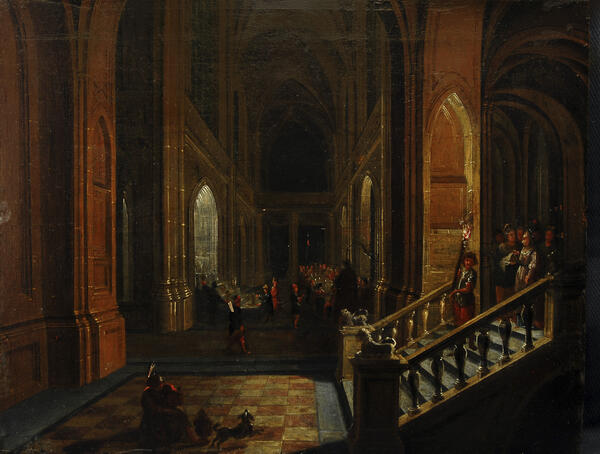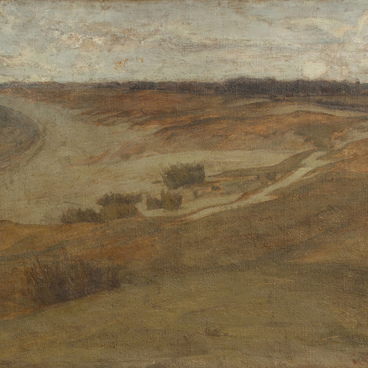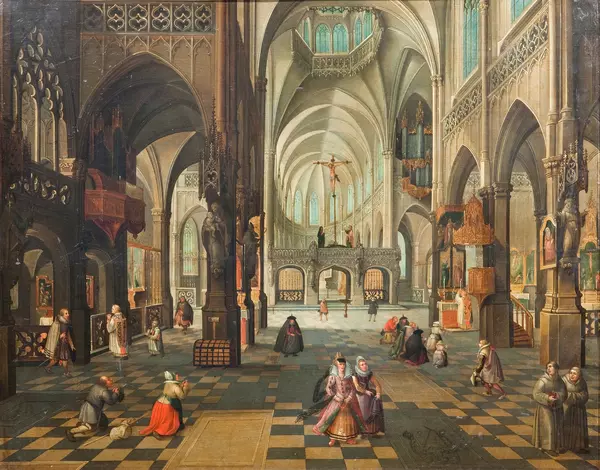Pieter Neefs the Elder was a representative of the Flemish school of painting, one of the leading artists who specialized in depicting the interiors of churches. He was influenced by Hendrik van Steenwijk the Elder and the Younger (father and son), who also painted interiors.
Little is known about the biography of Neefs the Elder. Presumably, he was born at the end of the 16th century in Antwerp, where his father was a silk merchant and also owned a tavern. There is no information about who his teacher was. However, it is known that in 1610, he became a free master of the Antwerp guild of Saint Luke. He often painted on copper, which made it possible to achieve smoothness and subtlety of painting. His sons, Lodewijck Neefs and Pieter Neefs the Younger, also specialized in interior design.
The works of Pieter Neefs the Elder are stored in the collections of the State Hermitage Museum, the Rijksmuseum in Amsterdam, the National Gallery of Art in Washington, the Indianapolis Museum of Art, and the Metropolitan Museum of Art in New York.
One of the founders of this genre of painting is Hans Vredeman de Vries, a 16th-century Dutch architect, artist, and engineer. While a century earlier artists depicted only the exterior of buildings, in the 16th century, there emerged paintings representing the interior. At the time, the skill of artists in depicting linear perspective was developing.
Pieter Neefs the Elder’s painting is emotionally austere, but he was very skillful in handling the contrasting areas of light and dark, creating a feeling of air in the space going deep into the painting. The viewer can see a feast in a cathedral with a characteristic feature of Gothic architecture — a groin vault. The artist’s passion for painting contrasts between illuminated and dark areas, as well as his ability to depict external and internal light, led Neefs the Elder to paint a series of nocturnal church interiors. Researchers note some irreality of its interiors — though their prototypes were real churches and cathedrals. Staffage figures of people on the canvases of Neefs the Elder were often painted by other artists.
Little is known about the biography of Neefs the Elder. Presumably, he was born at the end of the 16th century in Antwerp, where his father was a silk merchant and also owned a tavern. There is no information about who his teacher was. However, it is known that in 1610, he became a free master of the Antwerp guild of Saint Luke. He often painted on copper, which made it possible to achieve smoothness and subtlety of painting. His sons, Lodewijck Neefs and Pieter Neefs the Younger, also specialized in interior design.
The works of Pieter Neefs the Elder are stored in the collections of the State Hermitage Museum, the Rijksmuseum in Amsterdam, the National Gallery of Art in Washington, the Indianapolis Museum of Art, and the Metropolitan Museum of Art in New York.
One of the founders of this genre of painting is Hans Vredeman de Vries, a 16th-century Dutch architect, artist, and engineer. While a century earlier artists depicted only the exterior of buildings, in the 16th century, there emerged paintings representing the interior. At the time, the skill of artists in depicting linear perspective was developing.
Pieter Neefs the Elder’s painting is emotionally austere, but he was very skillful in handling the contrasting areas of light and dark, creating a feeling of air in the space going deep into the painting. The viewer can see a feast in a cathedral with a characteristic feature of Gothic architecture — a groin vault. The artist’s passion for painting contrasts between illuminated and dark areas, as well as his ability to depict external and internal light, led Neefs the Elder to paint a series of nocturnal church interiors. Researchers note some irreality of its interiors — though their prototypes were real churches and cathedrals. Staffage figures of people on the canvases of Neefs the Elder were often painted by other artists.




